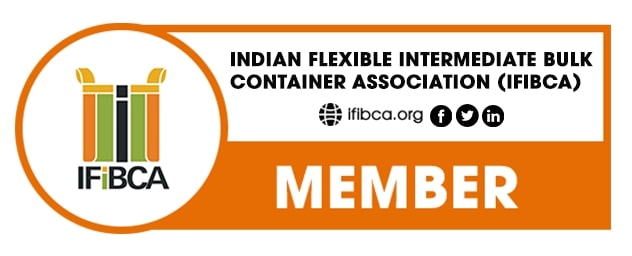Flexible Intermediate Bulk Containers (FIBCs), also known as bulk bags, are large, flexible containers used for the storage and transport of dry goods such as grains, powders, and chemicals. They are made of woven polypropylene material and come in a variety of sizes and capacities, ranging from small bags that hold a few hundred pounds of material to large bags that can hold several thousand pounds.
FIBCs are designed to be user-friendly and efficient, with features such as lifting loops, duffel tops, and discharge spouts to make handling and dispensing of the contents easy. They are also designed to be durable and withstand harsh conditions, such as exposure to UV light, moisture, and extreme temperatures.
In addition to their durability, FIBCs are also cost-effective and environmentally friendly. They are reusable and recyclable, reducing the need for disposable packaging materials and waste. They also offer a space-saving solution, as they can be compacted and stacked when not in use.
Overall, FIBCs are a versatile and cost-effective solution for the storage and transport of bulk materials. They provide a safe and efficient way to handle and store materials, while also reducing costs and promoting sustainability.
How FIBC Bags Help Reduce Shipping Costs?
Flexible Intermediate Bulk Containers (FIBCs), also known as bulk bags, are an economical and efficient solution for transporting and storing large quantities of dry goods. These bags are designed to be lightweight and flexible, making them easy to handle, store, and transport. The use of FIBCs can also help reduce shipping costs in several ways:
1. Space optimization: FIBCs are collapsible, which means that they can be compressed and stacked when not in use. This allows for more efficient use of storage space, reducing the need for additional warehousing or storage facilities.
2. Weight reduction: Compared to other types of packaging, such as drums or boxes, FIBCs are lighter, which means that they reduce the overall weight of the shipment. This can result in lower shipping costs, as shipping companies typically charge based on the weight of the shipment.
3. Reduced labor costs: FIBCs are designed to be easily handled by a single person, reducing the need for multiple workers to handle and load the bags. This can result in lower labor costs, as well as a reduction in the risk of injury to workers.
4. Increased capacity: FIBCs are available in a range of sizes and capacities, with some bags capable of holding several thousand pounds of material. This allows for larger quantities of material to be shipped in a single bag, reducing the number of shipments required and the associated shipping costs.
5. Reusable and recyclable: FIBCs are designed to be reusable and recyclable, reducing the need for disposable packaging materials and the associated costs. This also helps to reduce waste and promote sustainability.
In conclusion, the use of FIBCs for shipping and storage can help to reduce costs in several ways, including space optimization, weight reduction, reduced labor costs, increased capacity, and the ability to be reused and recycled. By utilizing these cost-saving benefits, companies can improve their bottom line and become more competitive in the marketplace


